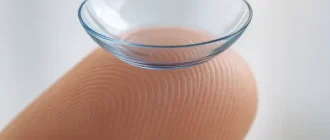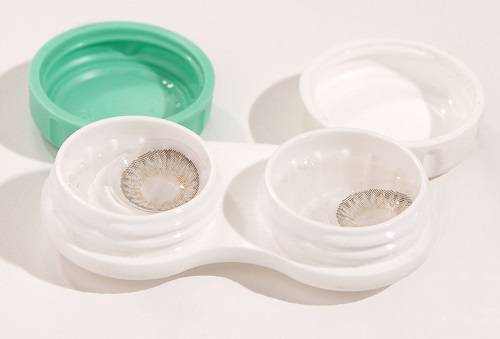When it comes to eyeglasses, not all lenses are created equal. High index lenses are a marvel of modern optics that make thick, heavy glasses a thing of the past for people with strong prescriptions. But are they worth it? How much do they really cost, and who should consider them? Let’s break it all down, from expert opinions to real-world scenarios that illustrate the difference high index lenses can make.
What Are High Index Lenses? And Why Are They Expensive?
High index lenses are specially designed to bend light more efficiently than standard lenses, making them thinner and lighter. They’re ideal for those with moderate to high refractive errors—whether that means nearsightedness, farsightedness, or astigmatism. The reason they cost more is because of the technology and materials involved. A standard CR-39 plastic lens has an index of refraction of 1.50, whereas high index lenses can have indices of up to 1.74, meaning they bend light more effectively and reduce thickness.
Cost Overview
The cost of high index lenses typically ranges between $150 to $500, depending on several factors like the refractive index chosen, brand, and additional coatings such as anti-reflective or blue light blocking. Here’s a general cost breakdown:
- 1.60 Index: $150 – $200
- 1.67 Index: $200 – $350
- 1.74 Index: $300 – $500
But these are just average costs without including frames, coatings, or other potential add-ons. High index lenses are often an investment, but many people find the benefits outweigh the costs—especially for those who have struggled with the weight of traditional lenses.
Who Really Needs High Index Lenses?
High index lenses aren’t for everyone. Most eye care professionals recommend them for those with prescriptions stronger than -4.00 diopters. Below this range, the difference in thickness may not be significant enough to justify the cost.
Imagine two patients:
- Sophie has a prescription of -6.50 in both eyes. With standard plastic lenses, her glasses are thick and heavy, leading to constant nose discomfort. By upgrading to 1.67 high index lenses, Sophie is able to cut the lens thickness by 35%, making her glasses more comfortable and aesthetically pleasing.
- James has a prescription of -2.00. For James, standard lenses work just fine. Opting for high index lenses would be more about aesthetics than necessity, and might not provide enough of a practical difference to warrant the cost.
Expert Opinions: A Look at Medical Insights
Dr. Peter Chang, an optometrist with over 15 years of experience, explains, “The primary benefit of high index lenses is comfort, both physical and visual. Patients with high prescriptions often complain about the weight and distortion caused by traditional lenses. High index lenses significantly reduce this, leading to better overall eye health.” He notes that abbe value, or the dispersion of light through a lens, can also play a role in comfort—high index lenses tend to have lower abbe values, meaning they can produce more chromatic aberration if not fitted correctly. Thus, proper fitting and adjustments by a professional are crucial.
The Science of Thickness Reduction
If we look at some numbers, it’s clear how impactful high index lenses can be in reducing lens thickness. A 1.74 high index lens can be up to 50% thinner than a conventional 1.50 index plastic lens for the same prescription. For people with extreme prescriptions, this difference can be life-changing.
Consider this:
- A prescription of -10.00 diopters with a standard lens might be 11 mm thick at the edge.
- With a high index lens (1.74), that thickness can be reduced to approximately 5.5 mm.
That’s half the thickness, which can make a massive difference when it comes to both comfort and appearance.
Statistics You Should Know
- 87% of patients with high prescriptions (> -4.00) who switch to high index lenses report significant improvements in comfort.
- 1 in 3 people with moderate to high prescriptions chooses high index lenses primarily for cosmetic reasons.
- 50% reduction in weight is common when switching from standard plastic lenses to high index 1.74 lenses, making them much more suitable for all-day wear.
Addressing the Chromatic Aberration Concern
One of the most common concerns patients have is the potential for chromatic aberration—a type of distortion where colors appear fringed or blurry at the edges of objects. This is more common in high index lenses because they have a lower abbe value (a measure of how much light is dispersed).
Dr. Elena Morales, an optician, emphasizes that for those with prescriptions above -8.00, high index lenses are almost always worth it, despite the slight trade-off in optical quality. “Proper fitting and quality coatings can minimize chromatic aberration significantly. For most people, the benefits of a lighter, thinner lens far outweigh the minor color distortions,” she explains.
Our Editorial Take: High Index Lenses—Worth It or Not?
If you have a strong prescription and are tired of wearing what feels like a brick on your face, high index lenses could be a game-changer. They’re an investment in both comfort and aesthetics. We recommend talking to your eye care professional about the options and whether the reduced thickness justifies the additional cost in your case. If you have a prescription stronger than -4.00 diopters, it’s definitely worth the conversation. Remember, when it comes to comfort, health, and confidence, skimping isn’t always the best choice—sometimes the thinner, the better.
For anyone with a milder prescription, stick to standard lenses unless you have a very specific need for a slimmer profile. It’s all about balancing practicality with price.





